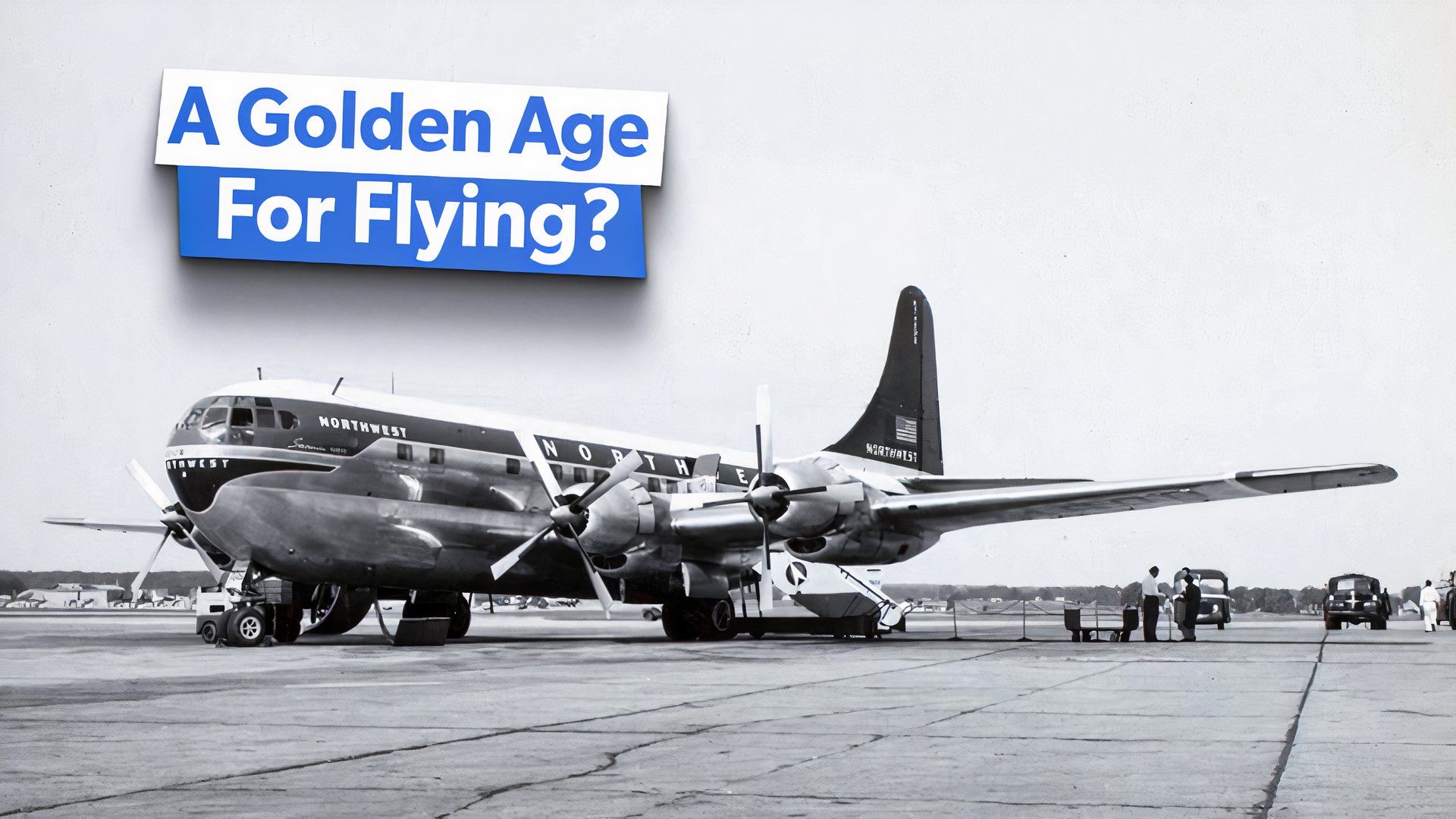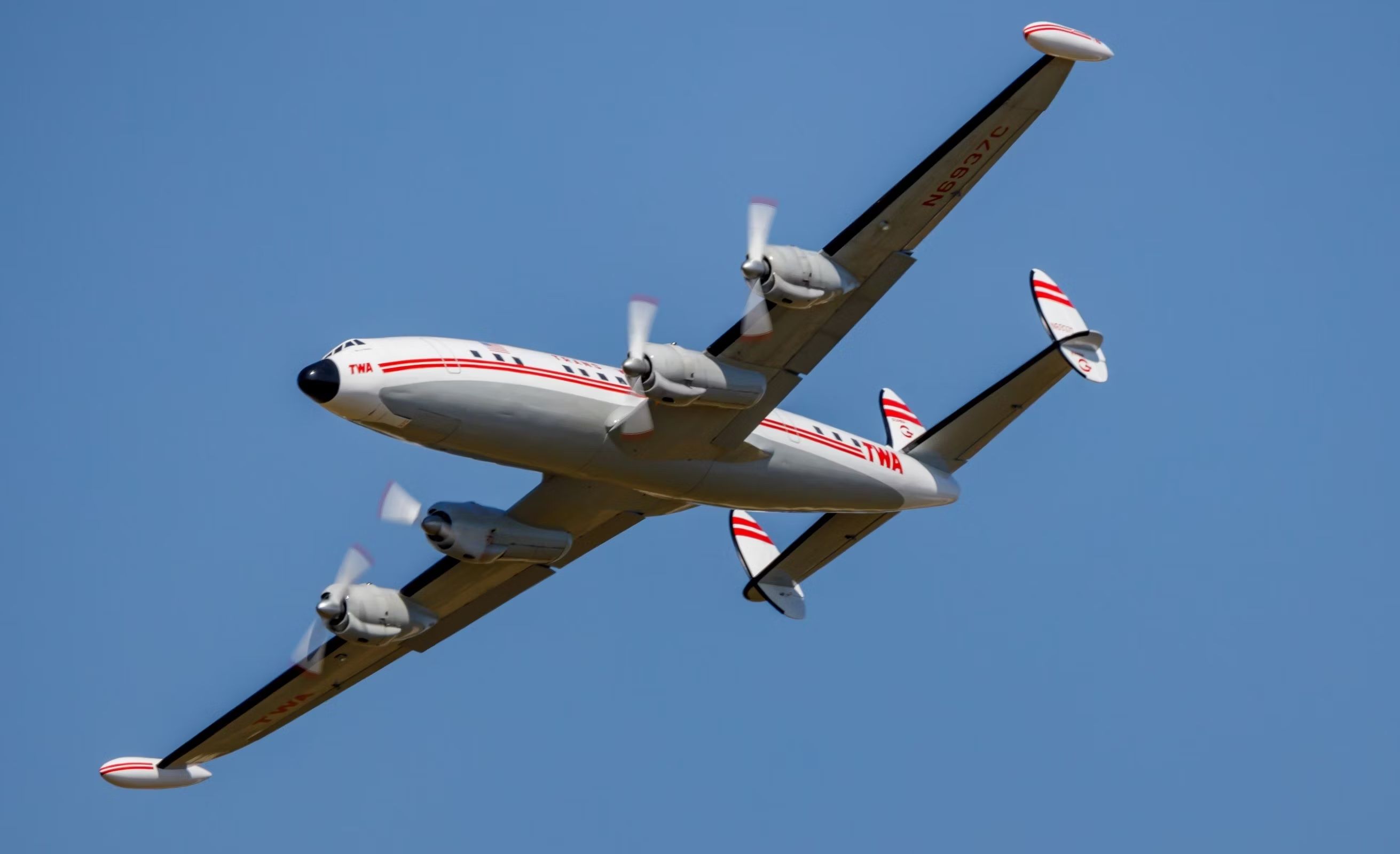Summary
- Propliners dominated the skies post-World War II with impressive speed, reduced engine noise, and sleeping berths for passengers.
- Propliners like the Boeing 377, Douglas DC-6, and Lockheed Super Constellation offered luxury and efficiency in the 1950s.
- These iconic and luxurious propliners helped promote the notion that the 1950s were a golden age for piston-powered flight.
In the era following the end of the Second World War, piston-engined, propeller-powered aircraft dominated the skies, offering impressive speed and comfort in comparison to the first generation of passenger airliners. These
classic aircraft
could handle turbulence better by flying at higher altitudes and introducing insulation to significantly reduce engine noise, making them more tolerable for longer and longer journeys.
These new propliners also cut down on travel times, with more powerful engines that could reduce trips across the country down to just eight hours, and did not require a technical stop for refueling. Furthermore, their lower operating costs allowed for roomy accommodations, and some were even equipped with cabins and sleeping berths. Nonetheless, this golden era of flight was characterized by exclusivity, as prices remained sky-high and prevented most from easily accessing air travel.
During the 1950s, propliners still maintained a strong edge over turboprops and jets, which were slow to enter the market and were riddled with safety and operational concerns. As a result, the 1950s would eventually go down in the history books as a golden age for propellor-powered passenger air transport. Let’s take a deeper look at some of the most common aircraft that one might fly on during this age of propellor-driven luxury.
The Boeing Model 377 Stratocruiser
No aircraft is possibly more emblematic of this era than the lumbering Boeing 377 Stratocruiser, a long-range, quad-engine airliner that entered service in 1949 with Pan American World Airways. The luxurious aircraft offered two separate passenger decks alongside a pressurized cabin, both novel for an aircraft of the era. The airplane can accommodate up to 114 passengers but typically carries around 60-80 passengers in a combined sleeping berth/seated configuration.
Despite its size and odd shape, the Stratocruiser was surprisingly fast and efficient, as it had been developed from the C-97 Stratofreighter
military
cargo aircraft, which had in and of itself been designed from the B-29 Superfortress. Although it was undeniably iconic, the Boeing 377 was ultimately not as much of a commercial success as the Seattle-based manufacturer may have hoped, with only 55 ever to enter service, according to R.G. Grant’s 2002 book The Complete History of Flight.
Nonetheless, the aircraft would fly routes across the globe and some variants would later serve with NASA as oversized cargo transports for the Gemini space program. Here are some specifications for the 377 Stratocruiser:
|
Category: |
Boeing Model 377 Stratocruiser specification: |
|---|---|
|
Engines |
4 x 3,500 horsepower Pratt & Whitney R-4360B Wasp Major 28 radial |
|
Wingspan |
141 feet |
|
Length |
110 feet 4 inches |
|
Cruising speed |
340 miles per hour |
Douglas DC-6
A piston-powered airliner and later cargo aircraft built by the Douglas Aircraft Company, the DC-6 was another aircraft emblematic of the propliner golden age, having served extensively throughout the decade after entering service with American Airlines and United Airlines in March 1947. The airliner was undoubtedly one of Douglas’ most recognized commercial successes of the era, with over 700 eventually being built, some of which even remain in service in limited special roles today.
Photo: Thiago B Trevisan | Shutterstock
The DC-6 came from the DC-4 and improved on its predecessor in many metrics. The original development of the DC-6 was done for the United States military, which was looking for an improved version of the Douglas C-54 Skymaster. However, a commercial variant was soon put on the table and brought to market.
One of the earliest and most noteworthy operators of the DC-6 was Pan American World Airways, which flew both passenger and cargo-configured variants of the popular propliner. The aircraft was placed on the airline’s first all-cargo transatlantic service.
The aircraft was continually improved over time, and would later even be developed into the Douglas DC-7, a popular propliner that Douglas used to compete with the Lockheed Constellation. The aircraft could eventually carry over 100 passengers and remained in production until 1958. Here are some specifications for the Douglas DC-6:
|
Category: |
Douglas DC-6B Specification: |
|---|---|
|
Engines |
4 x 2,500 horsepower P&EW R-2800 Double Wasp 18-cylinder radial |
|
Wingspan |
117.5 feet |
|
Length |
105.5 feet |
|
Cruising speed |
307 miles per hour |
Lockheed 1049G Super Constellation
Another iconic aircraft of the post-war decade was the Lockheed Super Constellation, which R.G. Grant referred to as “one of the most graceful airliners of all time.” An aircraft that was initially designed again for military usage later found a strong niche as a passenger airliner, after being provided with a fuselage extension that allowed for over 100 passengers to be accommodated.
The Super Constellation boasted both impressive range capabilities but also could fly faster than most airliners of the time. According to Lockheed Martin, the airliner could leverage hydraulically boosted power controls, all while offering top speeds that would easily beat out most fighter aircraft from the Second World War.
The aircraft entered service on 15 December 1951 with Eastern Airlines and would later enter service with Trans World Airlines (TWA). With over 260 entering commercial service, the aircraft was one of Lockheed’s most successful of the era and would go down in the history books as the iconic Super Connie. Here are some specifications for the Super Constellation:
|
Category: |
Lockheed L-1049 Super Constellation Specification: |
|---|---|
|
Engines |
4 x 3,250 horsepower Wright R-3350 Turbo 18-cylinder radial |
|
Wingspan |
127 feet |
|
Length |
112 feet |
|
Cruising speed |
360 miles per hour |





